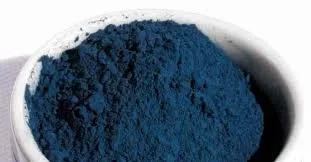Sustainable Indigo Clothing Dye Solutions for OEM Manufacturers and Designers
Exploring OEM Indigo Clothing Dye A Blend of Tradition and Innovation
Indigo dye, one of the oldest dyes in the world, has transcended time and cultures, becoming a staple in the fashion industry. The rise of Original Equipment Manufacturer (OEM) services in clothing production has further revolutionized the way indigo dye is integrated into apparel. This article explores the significance of OEM indigo clothing dye, its benefits, and the implications for manufacturers and consumers.
The Historical Significance of Indigo Dye
Indigo dye has a rich history that dates back over 6,000 years, with origins traced to ancient civilizations in India, Egypt, and China. It is derived from the leaves of the Indigofera plant, which undergoes a fermentation process to produce the vibrant blue dye that has been cherished for centuries. Its popularity soared during the 18th century when it became a significant commodity in trade and a sought-after dye for textiles. The distinct color of indigo added depth and character to fabrics, making it a favorite among artisans and consumers alike.
The Role of OEM in Clothing Production
OEM (Original Equipment Manufacturer) refers to companies that produce goods based on the specifications provided by another company. In the apparel industry, OEM services allow brands to create customized clothing lines without investing in manufacturing infrastructure. These OEM partners bring expertise, technology, and economies of scale, enabling brands to focus on design and marketing.
When it comes to indigo clothing dye, OEM manufacturers play a crucial role in facilitating the production of high-quality, sustainable, and innovative dyeing processes. They not only provide the dyeing service but also help brands navigate the complexities of sourcing and applying indigo dye in their product lines.
Benefits of OEM Indigo Clothing Dye
1. Customization One of the most significant advantages of using OEM services for indigo dye is the ability to customize colors, shades, and treatments. Brands can partner with manufacturers who specialize in indigo dye processes, allowing them to create unique products that stand out in the market.
oem indigo clothing dye

2. Sustainability As consumers become more eco-conscious, the demand for sustainable practices in the fashion industry has grown. OEM manufacturers often employ innovative techniques to reduce water consumption and chemical runoff, promoting sustainable indigo dyeing methods. This aligns with the ethical values of many contemporary brands and their clientele.
3. Quality Control Working with established OEMs ensures that the dyeing process adheres to industry standards and quality control measures. This leads to a higher consistency in color and overall product quality, which is essential in building brand reputation and customer loyalty.
4. Cost Efficiency Engaging with OEM partners can significantly reduce manufacturing costs. By leveraging their established infrastructure, brands can achieve competitive pricing on their products, making indigo-dyed clothing more accessible to consumers.
5. Innovation The fashion industry is continually evolving, and OEM manufacturers are often at the forefront of technological innovations. They invest in research and development to explore new dyeing techniques, fabrics, and treatments. This enables brands to stay ahead of trends and adapt to changing market demands.
The Future of OEM Indigo Clothing Dye
As the fashion industry moves toward a more sustainable and responsible future, the role of OEM indigo clothing dye is likely to evolve. With advancements in technology and a growing emphasis on eco-friendly practices, we can expect to see more innovative dyeing methods emerging. Additionally, as consumers become increasingly aware of the environmental impacts of their clothing choices, brands that prioritize sustainable practices in indigo dyeing will be better positioned for success.
Conclusion
The integration of OEM services in the dyeing process of indigo clothing has opened many avenues for creativity, sustainability, and innovation in the fashion industry. By tapping into the expertise of OEM manufacturers, brands can deliver high-quality, unique indigo-dyed clothing that resonates with consumers. As we look to the future, the potential for indigo dye and OEM partnerships to shape the textile landscape is promising, holding the key to a more sustainable and stylish world.
-
The Timeless Art of Denim Indigo Dye
NewsJul.01,2025
-
The Rise of Sulfur Dyed Denim
NewsJul.01,2025
-
The Rich Revival of the Best Indigo Dye
NewsJul.01,2025
-
The Enduring Strength of Sulphur Black
NewsJul.01,2025
-
The Ancient Art of Chinese Indigo Dye
NewsJul.01,2025
-
Industry Power of Indigo
NewsJul.01,2025
-
Black Sulfur is Leading the Next Wave
NewsJul.01,2025

Sulphur Black
1.Name: sulphur black; Sulfur Black; Sulphur Black 1;
2.Structure formula:
3.Molecule formula: C6H4N2O5
4.CAS No.: 1326-82-5
5.HS code: 32041911
6.Product specification:Appearance:black phosphorus flakes; black liquid

Bromo Indigo; Vat Bromo-Indigo; C.I.Vat Blue 5
1.Name: Bromo indigo; Vat bromo-indigo; C.I.Vat blue 5;
2.Structure formula:
3.Molecule formula: C16H6Br4N2O2
4.CAS No.: 2475-31-2
5.HS code: 3204151000 6.Major usage and instruction: Be mainly used to dye cotton fabrics.

Indigo Blue Vat Blue
1.Name: indigo blue,vat blue 1,
2.Structure formula:
3.Molecule formula: C16H10N2O2
4.. CAS No.: 482-89-3
5.Molecule weight: 262.62
6.HS code: 3204151000
7.Major usage and instruction: Be mainly used to dye cotton fabrics.

